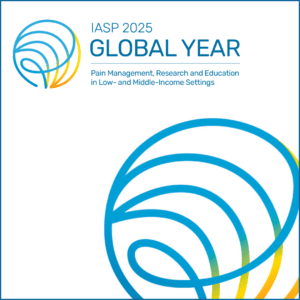There is a really attractive theory that has been used to explain why some people have chronic ongoing pain even though there is nothing wrong in the body part that hurts. The theory suggests that the pain occurs because motor commands don’t match proprioceptive feedback from the body. The name often given to this theory is the sensory-motor incongruence theory. Key proponents of the theory are Chris Harris (who wrote this in The Lancet) and the group of researchers at Bath, the excellent Candy McCabe in particular. Now, Candy is clever and there is a great background to the theory that i won’t do service here – so Google her. Anyway, we tried to test the theory in healthy volunteers by disrupting proprioceptive input and seeing if it made them hurt. We used vibration of tendons to give the illusion that the wrist is moving and then we asked them a whole of questions. In short, although there was a clear and consistent effect on how foreign the limb felt to them, how warm it felt, and how peculiar it felt, there was no effect on pain. That is, none of our participants reported pain. This was a bit surprising and really posed more questions than it did answers. I reckon the theory remains to be proved, or disproved. Candy has a nice angle on it – she says that although incongruence doesn’t cause pain in healthy and unperturbed nervous systems, perhaps it does in the nervous system of someone with chronic pain – a nervous system clearly perturbed. Time will tell I guess. Here is the abstract of our experiment.
Disrupted cortical proprioceptive representation evokes symptoms of peculiarity, foreignness and swelling, but not pain
G. L. Moseley (a) (c), K. McCormick (b), M. Hudson (b) and N. Zalucki (a)
(a) School of Physiotherapy, University of Sydney, Sydney,
(b) Division of Physiotherapy, University of Queensland, Brisbane, Australia and Department of Human Anatomy and Genetics and fMRIB Centre,
(c) University of Oxford, Oxford, UK.
Abstract
Objectives: It has been proposed that disruption of the internal proprioceptive representation, via incongruent sensory input, may underpin pathological pain states, but experimental evidence relies on conflicting visual input, which is not clinically relevant. We aimed to determine the symptomatic effect of incongruent proprioceptive input, imparted by vibration of the wrist tendons, which evokes the illusion of perpetual wrist flexion and disrupts cortical proprioceptive representation.
Methods: Twenty-nine healthy and naive volunteers reported symptoms during five conditions: control, active and passive wrist flexion, extensor carpi radialis tendon vibration to evoke illusion of perpetual wrist flexion, and ulnar styloid (sham) vibration. No advice was given about possible illusions.
Results: Twenty-one subjects reported the illusion of perpetual wrist flexion during tendon vibration. There was no effect of condition or of whether or not subjects reported an illusion on discomfort/pain (P>0.28). Peculiarity, swelling and foreignness were greater during tendon vibration than during the other conditions, and greater during tendon vibration in those who reported an illusion of wrist flexion than in those who did not (P<0.05 for all). Symptoms were reported by at least two subjects in each condition and four subjects reported systemic symptoms (e.g. nausea).
Conclusions: In healthy volunteers, incongruent proprioceptive input does not cause discomfort or pain but does evoke feelings of peculiarity, swelling and foreignness in the limb.
See full article at Rheumatology 45: 196-200
Moseley GL, McCormick K, Hudson M, & Zalucki N (2006). Disrupted cortical proprioceptive representation evokes symptoms of peculiarity, foreignness and swelling, but not pain. Rheumatology (Oxford, England), 45 (2), 196-200 PMID: 16377731


